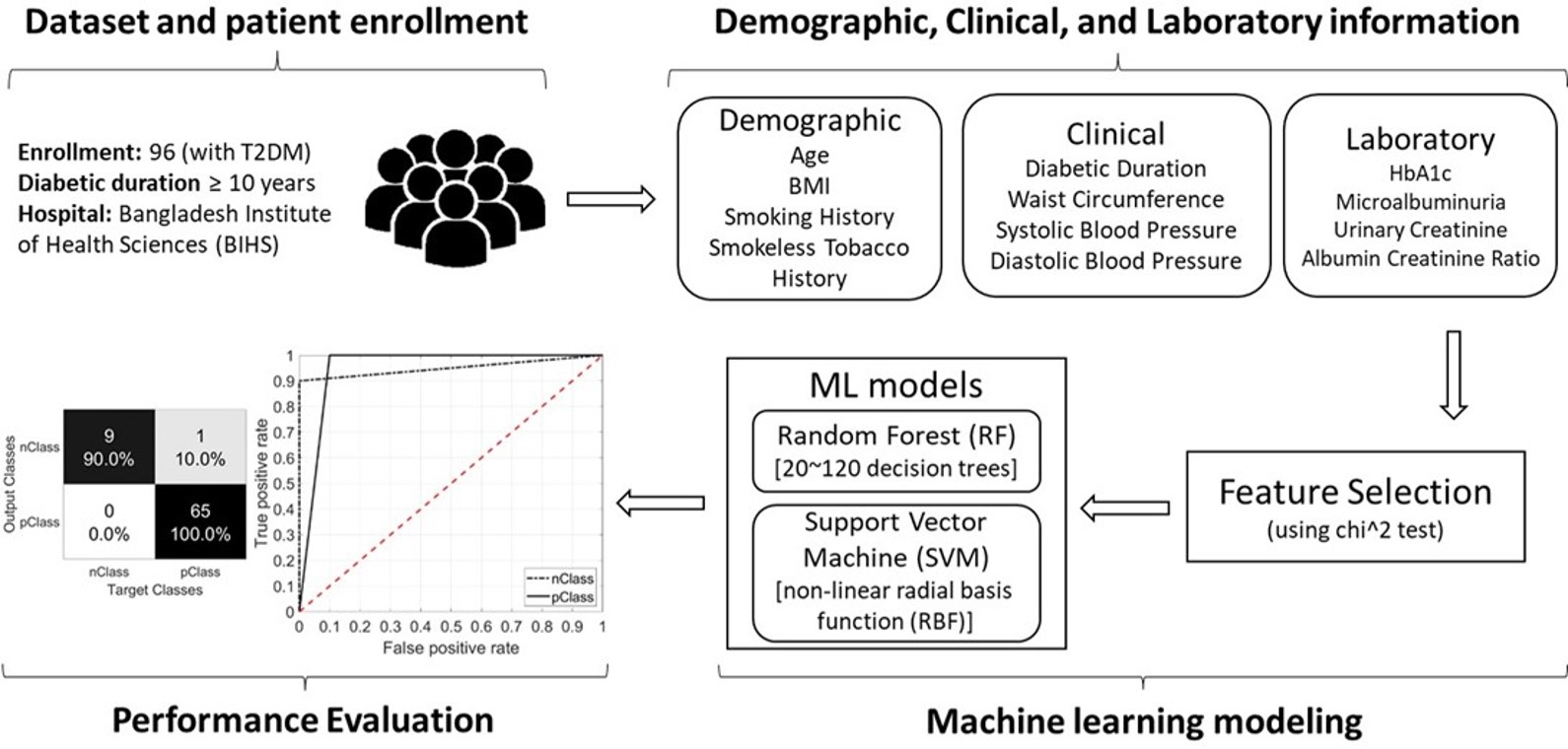Microvascular complications are one of the key causes of mortality among type-2 diabetic patients. This study was sought to investigate the use of a novel machine learning approach for predicting these complications from patient demographic, clinical, and laboratory profiles only. A total of 96 Bangladeshi participants having type-2 diabetes were recruited during their routine hospital visits. All patient profiles were assessed by using a Chi-squared (2) test to statistically determine the most important markers in predicting four microvascular complications; namely cardiac autonomic neuropathy (CAN), diabetic peripheral neuropathy (DPN), diabetic nephropathy (NEP), and diabetic retinopathy (RET). A machine learning approach based on random forest (RF) and support vector machine (SVM) was then developed to ensure automated clinical testing for microvascular complication in diabetic patients. The highest prediction accuracies were obtained by RF using diastolic blood pressure, Albumin-Creatinine ratio, and gender for CAN testing (98.67%), Microalbuminuria, smoking history, and hemoglobin A1C for DPN testing (67.78%), Albumin-Creatinine ratio for NEP testing (100%), and hemoglobin A1C, Microalbuminuria, and smoking history for RET testing (84.38%). This study suggests machine learning as a promising automated tool for predicting microvascular complications in diabetic patients using their profiles, which could help prvent those patients from further microvascular complications leading to early death.

